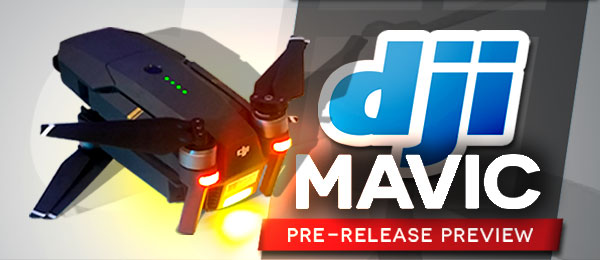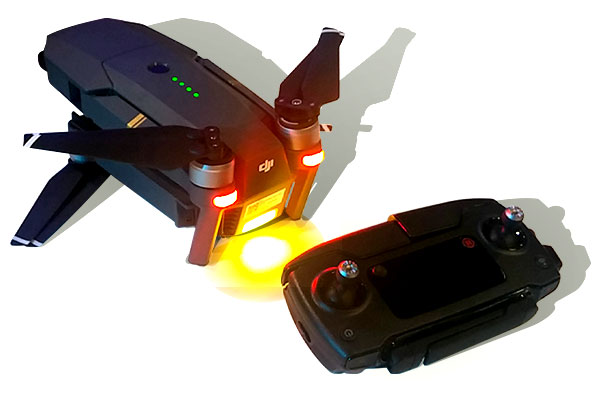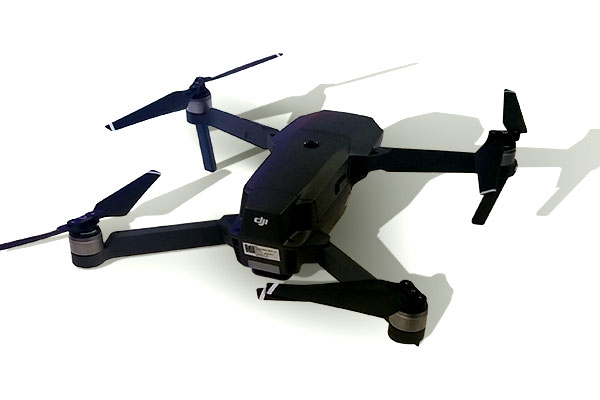DJI Mavic pre-release preview

Pre-release preview Photos by AMA Staff ModelAviation.com exclusive
Pre-release preview
It is believed that roughly 560 million photos and videos have been created using a DJI platform since the company’s inception. Photos and videos being taken from a DJI aircraft has increased 200% since last year. The DJI Inspire and Phantom have been hugely popular multirotors, and to keep the momentum going, DJI unveiled a new model during a product rollout meeting on Tuesday, September 27, in New York City—the Mavic Pro. I was fortunate to attend the unveiling and get some stick time. The Mavic Pro is a compact drone that can collapse to approximately the size of a third of a sheet of paper and is roughly the weight of a bottle of water. When fully expanded, the Mavic Pro is half of the size of the Phantom series. The Mavic Pro drone can be folded and easily placed in a backpack, a purse, or possibly in the pocket of a pair of cargo shorts—perfect for your next road trip, birthday party, or outdoor adventure. Just throw it in your backpack and go! Don’t let its size fool you. The Mavic Pro is a powerful aircraft that could easily rival some of the features of the Phantom. In some cases, the Mavic Pro actually surpasses the Phantom 4 with 24 computing cores, a vision sensor system with five cameras, and redundant sensors on the belly that joined with GPS to create stable flight and sense-and-avoid capabilities.
As the Mavic Pro flies, it constantly senses and measures obstacles in its flight path and surroundings. This marriage of the visual sensors and GPS also allows the Mavic Pro to take off and land within centimeters. This new, compact drone can follow terrain relative to its altitude, so if you set the Mavic Pro on a course, as it approaches a hill, the drone will gain elevation. The Mavic Pro also utilizes sensors and GPS to operate under “tripod mode,” which allows the drone to fit in tight places. Of course, like the other DJI product lines, Mavic Pro monitors TFRs, nearby airports, and other regulatory considerations. What really sets this little multirotor apart, aside from its compact size, are some great tracking and gesturing features. Much like the Phantom 4, the Mavic Pro can lock on objects. This new DJI drone can lock on an object, then has the option to go into three modes: it can circle around the object; it can profile the object (side/parallel flight); or it can follow the object. I tested the drone and the tracking feature works extremely well—perhaps even better than a human operator. Occasionally an object might float near the edge of a frame, but generally the object was locked in the center of the screen. Those who try to manually track an object know that it is difficult and you’ll be lucky if roughly half of footage is useable. Relying on the Mavic Pro’s visual sensors and object-locking system, pilots will end up with consistently excellent-quality, well-composed shots.

I didn’t get to test the Mavic Pro in more extreme situations with fast-moving objects or in situations with a lot of traffic, but I was assured that if the Mavic Pro can keep visual line of sight of the object it is tracking, it will not lose its lock. This new DJI drone primarily relies on vision to track objects, not GPS that has a margin of error. The Mavic Pro was trained to recognize and lock down on objects such as people, boats, pets, or bicycles. The tracking feature can be activated using the remote control integrated with the DJI app and your smartphone. A cellphone can be difficult to see in bright daylight, as mine was during my test flight, so you might want to incorporate a sun guard or operate in the shade. In addition to using the remote and smartphone, users can use hand signals or gestures to activate many of these modes! Users can track objects or take an aerial selfie all through hand signals. Like the rest of the drone, the camera looks small and unassuming, but again, don’t let its size fool you. The three-axis gimble-type camera shoots robust 4K 30 fps or 1080p still shots and 96 fps video and 12 MP photos. The Mavic Pro flew as I expected it to. It was rock solid, hovered well, and was easy to operate. Using a small button the side of the radio, a pilot can activate sports mode, allowing the drone to fly as fast as 40.6 mph. With sports mode turned off, the Mavic Pro is more subdued, although I get the sense it wants to be released. This is probably comparable to driving a sports car—you get the sense the drone is itching to go.

You can preorder the Mavic Pro now and shipping will start October 15. The Mavic Pro will start appearing in hobby shops on November 2. Prices start at $749 for the aircraft, $999 for the aircraft and radio, and $1,299 to include the aircraft, radio, extra batteries, chargers, propellers, and a shoulder bag. More accessories are expected to be released soon including Goggles.
—Model Aviation staff










Add new comment